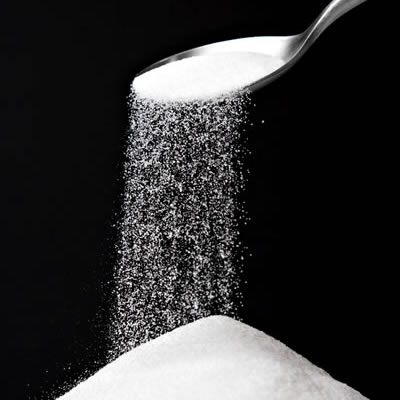
Granulated Sugar
Also Known as Sucrose, Beet sugar, or Cane sugar
What is Granulated Sugar?
Granulated sugar is the very sweet, tiny granule-shaped product of processed, crystallized, and dried sugar. Also more technically referred to as Sucrose.
Origin
In the USA, granulated sugar comes from sugar cane (45%) and sugar beet (55%). Sugar cane is produced in Florida, Louisiana, Hawaii and Texas. While sugar beet production occurs in the Upper Great Plains (Western North Dakota, North Central Wyoming, Montana), the Central Great Plains (Nebraska, Colorado, Southeastern Wyoming), and the Northwest (Idaho, Washington and Oregon). Granulated sugar was derived from the sugar refining process once manufacturers found a way to dry the granules, consequently reducing conglomeration in large chunks due to the high moisture content of the sugar. Before drying was introduced into processing, granulated sugar was impossible to produce and sugar was generally sold in a block-like form because of this very same moisture content issue. Once purchased, the block of sugar had to be chipped at or broken down for usage. Granulated sugar added a much needed ease to utilizing sugar.
Function
Granulated sugar functions primarily as a tenderizer in baked goods. Secondary functions include sugar as a moisturizer because of the absorption capacity of sugar granules, and also sugar, of course, functions to add flavor.
Application
Granulated sugar is the most readily available form of sugar on the market and is an ingredient found in virtually any type of baked good available. Granulated sugar provides flavor, texture, denotes crumb and crust color, and serves as a food source for yeast in yeast-leavened baked goods. Sugar is primarily noted for the maillard reaction or caramelization that takes place during baking.

